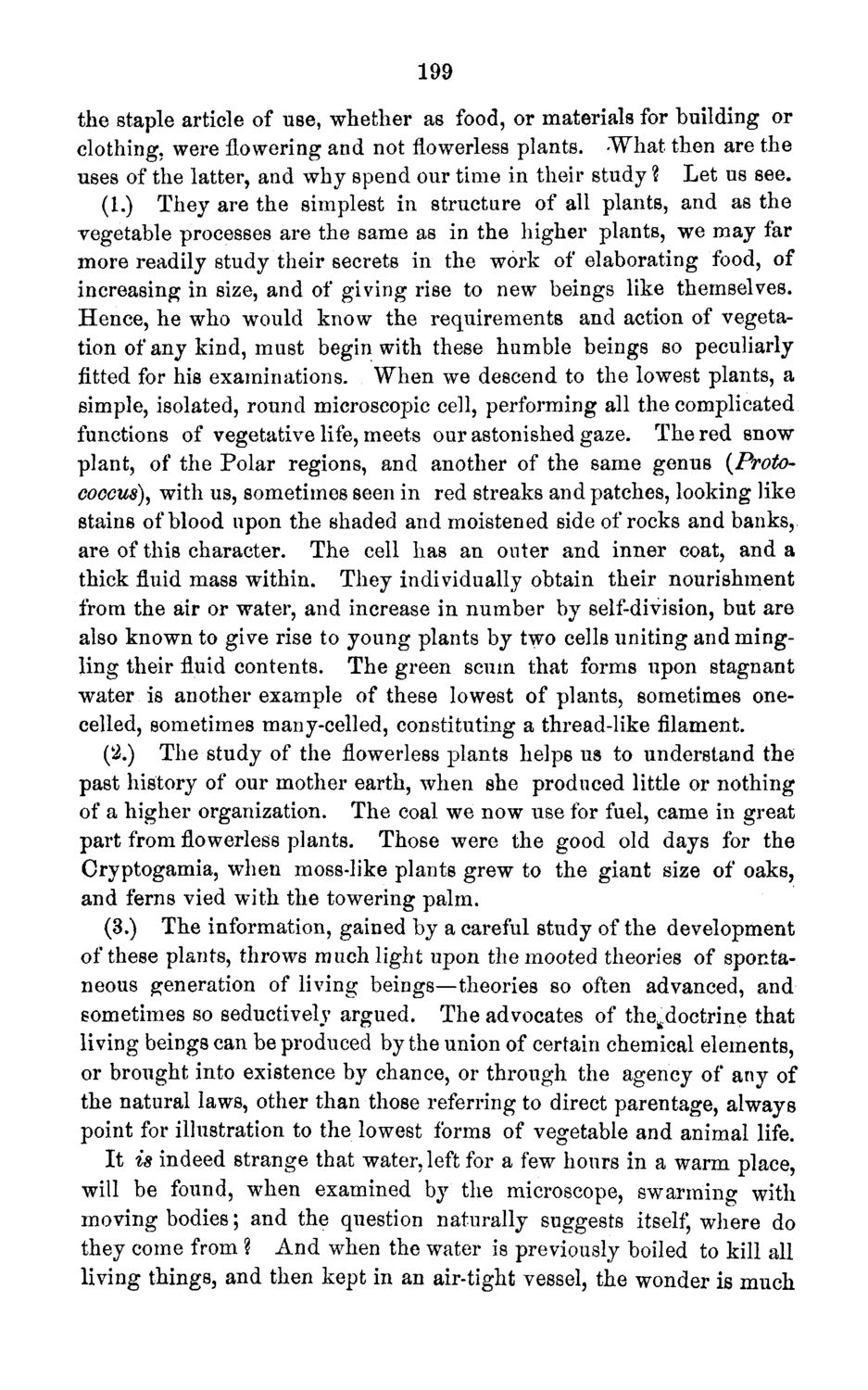| |
| |
Caption: Board of Trustees Minutes - 1871
This is a reduced-resolution page image for fast online browsing.

EXTRACTED TEXT FROM PAGE:
199 the staple article of use, whether as food, or materials for building or clothing, were flowering and not flowerless plants. What then are the uses of the latter, and why spend our time in their study ? Let us see. (1.) They are the simplest in structure of all plants, and as the vegetable processes are the same as in the higher plants, we may far more readily study their secrets in the work of elaborating food, of increasing in size, and of giving rise to new beings like themselves. Hence, he who would know the requirements and action of vegetation of any kind, must begin with these humble beings so peculiarly fitted for his examinations. When we descend to the lowest plants, a simple, isolated, round microscopic cell, performing all the complicated functions of vegetative life, meets our astonished gaze. The red snow plant, of the Polar regions, and another of the same genus (Protococeus), with us, sometimes seen in red streaks and patches, looking like stains of blood upon the shaded and moistened side of rocks and banks, are of this character. The cell has an outer and inner coat, and a thick fluid mass within. They individually obtain their nourishment from the air or water, and increase in number by self-division, but are also known to give rise to young plants by two cells uniting and mingling their fluid contents. The green scum that forms upon stagnant water is another example of these lowest of plants, sometimes onecelled, sometimes many-celled, constituting a thread-like filament. (2.) The study of the flowerless plants helps us to understand the past history of our mother earth, when she produced little or nothing of a higher organization. The coal we now use for fuel, came in great part from flowerless plants. Those were the good old days for the Cryptogamia, when moss-like plants grew to the giant size of oaks, and ferns vied with the towering palm. (3.) The information, gained by a careful study of the development of these plants, throws much light upon the mooted theories of spontaneous generation of living beings—theories so often advanced, and sometimes so seductively argued. The advocates of the^doctrine that living beings can be produced by the union of certain chemical elements, or brought into existence by chance, or through the agency of any of the natural laws, other than those referring to direct parentage, always point for illustration to the lowest forms of vegetable and animal life. It is indeed strange that water, left for a few hours in a warm place, will be found, when examined by the microscope, swarming with moving bodies; and the question naturally suggests itself, where do they come from ? And when the water is previously boiled to kill all living things, and then kept in an air-tight vessel, the wonder is much
| |